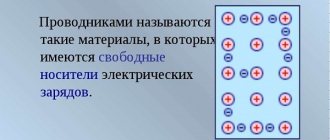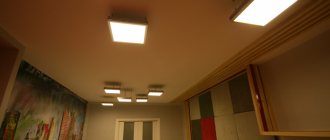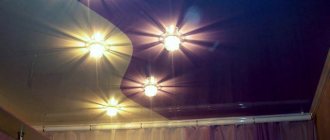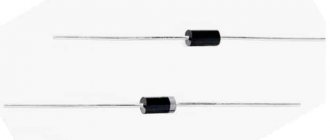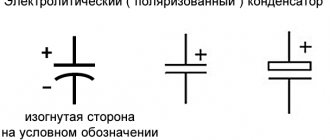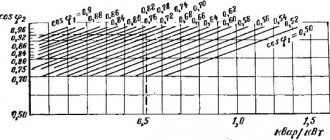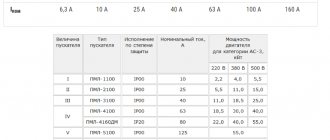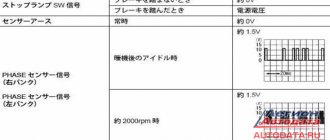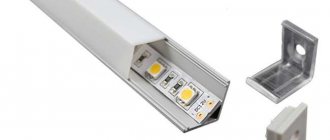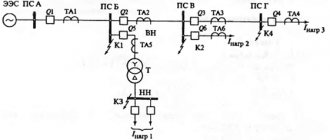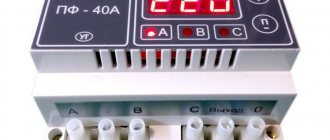Insulating hangers are designed for fastening wires and lightning protection cables to power line supports. They are garland-type structures in which components of linear fittings and suspension-type polymer insulators are connected in a serial or series-parallel manner. One of the determining factors for the quality of products is the aerodynamic characteristics and the ability of the insulating disk to flow around. The higher its self-cleaning capabilities, the better it copes with the assigned tasks, the longer it will properly perform its functions.
Quality assurance
The polymer single-chain and double-chain structures we offer with and without tension spiral clamps are manufactured in strict accordance with the requirements of existing GOSTs and quality standards (GOST 17613-80). The fiberglass rod included in the garland is protected by a special shell that can resist ultraviolet radiation and be inert in relation to aggressive environments.
The new generation of lightweight insulating suspension is a current analogue of porcelain and glass products. Our products can be applied to metal, reinforced concrete intermediate and wooden supports of 10 - 20 kV overhead lines for fastening aluminum and steel-aluminum wires of standard sections.
The temperature amplitude when using fittings such as tension insulating suspension can range from – 60 to + 50 degrees C. The operating atmospheric pressure withstand by the product is comparable to areas up to 1000 m above sea level and with the fourth degree of pollution.
Garlands of insulators. Voltage distribution among garland elements
⇐ PreviousPage 7 of 17Next ⇒For voltages of 35 kV and above, suspended insulators are assembled into garlands (Fig. 2.10, a
). The hinged connection of the garland elements ensures the flexibility of the garland, which reduces mechanical loads on the insulators in the event of a wire break and strong wind, and also creates ease of installation.
Rice. 2.10. Garlands of insulators:
A
– suspension diagram on the portal;
b
– equivalent circuit of a garland of insulators;
V
– voltage distribution across the elements of the garland
Garlands are divided into supporting
and
tension
. Supporting garlands are mounted on intermediate supports; their load is determined by the weight of the wires and possible precipitation (ice). To suspend the wires of the end, corner and anchor supports, tension garlands of insulators are used, which, in addition to the weight of the wire and ice, absorb loads determined by the tension of the wire. Therefore, they are located almost horizontally. When using large cross-section wires, double and triple garlands are used.
The main electrical characteristics of the garland are the dry-discharge and wet-discharge flashover voltages. The values of these voltages depend on the type and number of insulators used.
Conducted research and operating experience show that the values of the discharge voltages of the garland are not equal to the sum
discharge voltages of individual insulators. This is explained by the fact that when the garland is overlapped, the arc can be torn off from the surface of the insulator in certain areas. In addition, during operation, the surface of the insulator becomes contaminated with waste products from industrial enterprises and dust, which reduces the value of surface resistance and increases the likelihood of flashover.
Therefore, the electrical strength of a garland is usually assessed
by effective creepage distance specific effective leakage length
L
ef
and coefficient
leff = L
eff
U
,
(2.2)
where U
– linear voltage amplitude.
The greater the value of leff, the smaller the probability of overlap.
Meaning
L
ef
depends on the geometric dimensions of the insulator H
and D
(see Fig. 2.7) and for external insulation can be determined by the expression
L
eff =
LK
. (2.3)
K factor
depends on the ratio
L H
. The value of the coefficient
patient K
lies in the range of 1.0–1.4. lef
normalized and given
in tables for areas with varying degrees of pollution.
For reliable operation of the insulation, it is necessary that the leakage length be
L
³
K
× leff
U
slavemax , (2.4)
where U
slave max
do phases.
– the highest long-term permissible voltage between
The second distinctive feature of the operation of insulators in a garland is the uneven distribution of voltage across the individual elements of the garland.
The electrical circuit of the garland is shown in Fig. 2.10, b
.
Here C
– own capacity of the insulator;
C
1 – insulator capacity
relative to the support; WITH
2 – insulator capacity relative to the wire. For disc insulators used in operation, it is
capacity ranges within C
= 30–70 pF;
C
1
C
2 = 0.5–1.0 pF.
= 4–5 pF,
Let us consider the nature of the voltage change along an insulating garland
tori for the case when the wire has a positive potential relative to the support. The direction of currents for this case is shown in Fig. 2.10, b
.
Let's assume that
WITH
1 > 0, and
WITH
2 = 0 . Then the maximum current will be
flow through the first insulator from the wire (capacitance C
). As you approach the support, the currents flowing through the insulators will
decrease as a result of the shunting effect of capacitors
WITH
1, and
a minimum current will flow through the last insulator. In this case, the nature of the distribution among the elements of the garland will look like a curve 1
(Fig. 2.10,
c
).
For case C
1 = 0
and C
2 > 0
the greatest current will flow through
cut insulator located at the support, and the smallest one - through the per-
high insulator due to the shunting effect of capacitors
WITH
2. This is
Therefore, the nature of the voltage distribution over the elements of the garland will have the form of a curve 2
.
At C
1 > 0
and C
2 > 0
currents flowing through insulators (capacitive
sti S
), will be determined by the ratio of currents
i
1 = w
C
1
U
1 and
i
2 = w
C
2
U
2. Because
WITH
1 >
C
2, then
i
1 >
i
2
and the voltage at the first
there will be more wires in the insulator than on subsequent ones.
With a significant number of insulators ( n
> 6) the current flowing through
the nth
insulator can be greater than the current through
the n
– 1st insulator due to the ratio of the currents
i
1 and
i
2.
In this case, the voltage on the n
-th insulator may be greater than on
the n
-1st, and the nature of the voltage distribution along the garland will have the form of a curve
3
.
Thus, the reason for the uneven distribution of voltage across the insulators is the influence of capacitors C
1 and
C
2.
When the number of insulators is 6 or more, the first insulator from the wire accounts for 20–25% of the total phase voltage. Unequal
The number of voltage distribution does not reduce the electrical strength of the garland, however, at a voltage of 154 kV or more, corona may occur on the first insulator. The corona increases energy losses, causes metal corrosion and creates significant radio interference. Therefore, special measures are required to equalize the voltage on the string of insulators.
The most effective way to equalize voltage is to use protective fittings in the form of metal rings, ovals, figures of eight, fixed at both ends of the garland or only at the linear end. The fittings increase the capacity of the insulators relative to the wire, which leads to voltage equalization.
A relatively uniform voltage distribution also occurs when split wires are used. When it rains, the unevenness of the voltage distribution decreases due to an increase in leakage currents along the surface of the insulators, and in dry weather, a decrease in the unevenness is achieved due to intense ionization at the most voltage-loaded insulator. When using more massive insulators or double garlands, the unevenness is reduced due to an increase in the value of the through current flowing through the insulators’ own capacitances C
. The protective fittings protect the porcelain surface of the insulator from damage by the arc during overlaps, since the discharge is diverted from the surface of the insulator and the arc burns on the rings of the protective fittings. The discharge characteristics of garlands equipped with fittings practically do not differ from the characteristics of garlands
without fittings.
Selection of insulators
Selection of insulators for closed installations. The operating conditions for closed switchgear insulation are more favorable, since the insulation is less susceptible to various atmospheric conditions. In addition, the absolute values of internal and atmospheric overvoltages in networks up to 20 kV are significantly less than in networks of 35 kV and above. Therefore, the electrical strength margin of insulators for voltages up to 20 kV is quite high.
However, in the range of generator voltages, short-circuit currents can reach tens and hundreds of thousands of amperes.
Therefore, the support and bushing insulators of the closed switchgear, selected according to the rated voltage and current values, must be checked for dynamic resistance during short circuits (short circuits).
The essence of this calculation comes down to determining the bending moment acting on the insulator at the maximum value of the short-circuit shock current for the adopted busbar arrangement. Sometimes the calculation is reduced to determining the critical span between insulators using the catalog value of the bending moment for the selected insulator. These issues are discussed in detail in the course “Electric Power Plants”.
Selection of insulators for outdoor installation. To ensure reliable operation, the choice of the type and number of insulators in a garland must be made taking into account climatic conditions and the degree of air pollution. Based on the degree of air pollution, areas are divided into 6 categories. Category I includes areas with the least degree of air pollution: these are agricultural areas, meadows, forests, swamps, and tundra. Category II includes areas with strong wind soil erosion, agricultural areas where chemical fertilizers and herbicides are used, and industrial cities. The area near industrial enterprises, depending on the type and volume of production, as well as areas near seas, salty soils and lakes belong to pollution zones III–VI.
The dimensions of these zones - the minimum protective interval for various industries - are determined by the guidelines for the selection of insulation. If there is an overlap of pollution zones from two sources, then the degree of pollution is determined by the source that creates the greatest pollution.
For specific climatic conditions, taking into account the degree of atmospheric pollution, the electrical strength of the garland will be ensured if
nL
1 ³
K
×leff
U
slavemax , (2.5)
where n
– the number of insulators in the garland;
L
1 – creepage distance of one insulator.
Number of insulators in a garland
n
³
K
×leff
U
slavemax . (2.6)
L
1
K values
=
f
(
LH
) are given in table. 2.1.
K values
=
f
(
LH
)
Table 2.1
| L.H. | 1,5 | 2,0–2,3 | 2,3–2,7 | 2,7–3,2 | 3,2–3,5 |
| K | 1,0 | 1,1 | 1,2 | 1,3 | 1,4 |
To ensure reliable operation of garlands in the rain when exposed to internal overvoltages, the number of elements in the garland must satisfy the condition
n
³
K
р ×
U
slave max , (2.7)
E
m.r
H
where
E
m.r.
and H
– accordingly, the calculated wet-discharge voltage
femininity and construction height of the adopted insulator;
K
R
tion K
R
– calculated multiplicity of internal overvoltages. The value is accepted as 3 for power lines 110–220 kV; 2.7 – for 330 kV; 2.5 –
for 500 kV. E
m.r = 2.0-2.5 kV/cm.
During operation, damage to individual elements is possible, therefore the electrical installation rules (EPI) recommend increasing the number of insulators determined by calculation by one for 110–220 kV overhead lines and two for 330 kV and above.
The recommended number of elements of the most common types of insulators in supporting garlands of 110–500 kV overhead lines on metal and reinforced concrete supports at an altitude of up to 1000 m above sea level is given in Table. 2.2.
Table 2.2
Number of elements of the most common types of insulators in a garland, pcs.
| Insulator type | Power line voltage, kV |
| PF6-A | – |
| PF6-B | |
| PF6-V | |
| PF16-A | |
| PF20-A | – |
| P-8.5 | |
| P-11 | |
| PFE-11 | |
| PS6-A | |
| PS-11 | |
| PS12-A | |
| PS16-A | |
| PS16-B | |
| PS22-A | – |
| PS30-A | – |
| PS30-B | – |
The number of suspension insulators in tension garlands is increased by one compared to that recommended for supporting garlands. On transition supports with a height of more than 40 m, the number of insulators in the garland should be increased in comparison with those accepted for all other supports of this overhead line by one insulator for every 10 m of support height above 40 m. For overhead lines passing at an altitude of more than 1000 m above sea level, the number of elements in the garland increases by one.
The number of insulators on overhead lines running in places with severe air pollution should be selected taking into account local conditions. At the same time, for regions IV–VI, the possibility of using special insulators should be considered.
The choice of the type and number of suspension and support insulators for outdoor switchgear is made in the same way as for overhead lines. However, it should be taken into account that higher requirements are imposed on the insulation of the outdoor switchgear, since damage to the insulation of the outdoor switchgear can lead to serious accidents and damage to expensive equipment. Therefore, for equipment intended for installation in outdoor switchgear,
effective leakage length
lef
is set depending on
depending on performance category A, B or C (Table 2.3). Category A equipment is intended for areas with pollution degrees I–II. Equipment of category B has a reinforced design and is intended for areas of categories III–IV. For pollution degree VI, category B equipment is used.
With pollution degrees III–VI, it is recommended to remove the outdoor switchgear from the zone of increased pollution, and placing the 500–750 kV outdoor switchgear in areas IV–VI is not allowed at all.
Table 2.3
Effective leakage length leff
for equipment categories
| Electrical equipment category | lef | |
| with grounded neutral | with isolated neutral | |
| A | 1,50 | 1,7 |
| B | 2,25 | 2,6 |
| IN | 3,10 | 3,5 |
To increase discharge voltages in polluted atmospheres, insulators with a surface coated with a semiconductor glaze or water-repellent grease are used. Under operating conditions, periodic washing of the insulation is also used.
According to the PUE, the mechanical strength safety factor of the adopted insulators should be: for overhead lines in normal mode – no less than 2.7; at average annual temperature, absence of ice and wind - no less than 5.0; in emergency mode for 500 kV overhead lines – no less than 2.0; and for voltages of 330 kV and below - no less than 1.8.
⇐ Previous7Next ⇒
WHAT IS CONFIDENT BEHAVIOR IN INTERPERSONAL RELATIONSHIPS? Historically, there are three main patterns of differences that exist between...
What does the IS operation and maintenance department do? Responsible for the safety of data (copying schedules, copying, etc.)…
Live by the rule: IS THERE NOT MUCH THING IN THE WORLD EXISTING? It is no coincidence that I emphasize that the space in your head is limited, but there is a lot of information around, and that your right...
What to do if there is no reciprocity? And now let's come down from heaven to earth. Have you landed? Let's continue the conversation...
Didn't find what you were looking for? Use Google search on the site:
Advantages of a hanging garland of insulators
- increased resistance to mechanical stress;
- high moisture-discharging qualities in conditions of possible contamination;
- convenient and rational installation;
- ability not to split during transportation;
- low weight;
- high resistance to overvoltage;
- Low level of radio interference is guaranteed.
The double-circuit insulating suspension used will remain in working condition even if one of the insulators is completely destroyed!
What do we offer?
We present fittings options in accordance with the type of wires used. You can choose from the following items of insulating linear fittings with polymer insulators of the 100 kN series:
- single-chain supporting;
- double-chain supporting;
- single-chain tensioners;
- single-chain tensioners;
- supporting double-circuit (with polymer insulators with reinforced supporting spiral clamp).
Each tension insulating suspension we offer is certified and approved for use in all energy systems in accordance with the requirements of JSC FGC UES. It is distinguished by strength, reliability, durability, and long service life.
The ideal modern hanging garland of insulators intended for mounting the current-carrying busbars of switchgears of power plants is a structure made of composite polymers.
We provide reliability
Each insulating support suspension is made from modern technological components and is tested to identify hidden defects by the innovative scientific and technical enterprise “IprimEnergia”. This includes artificial aging of fiberglass using foreign technologies. This guarantees our customers wear-resistant, high-quality products. All details regarding various types of products can be found in our catalog or found out by contacting our consultants.
